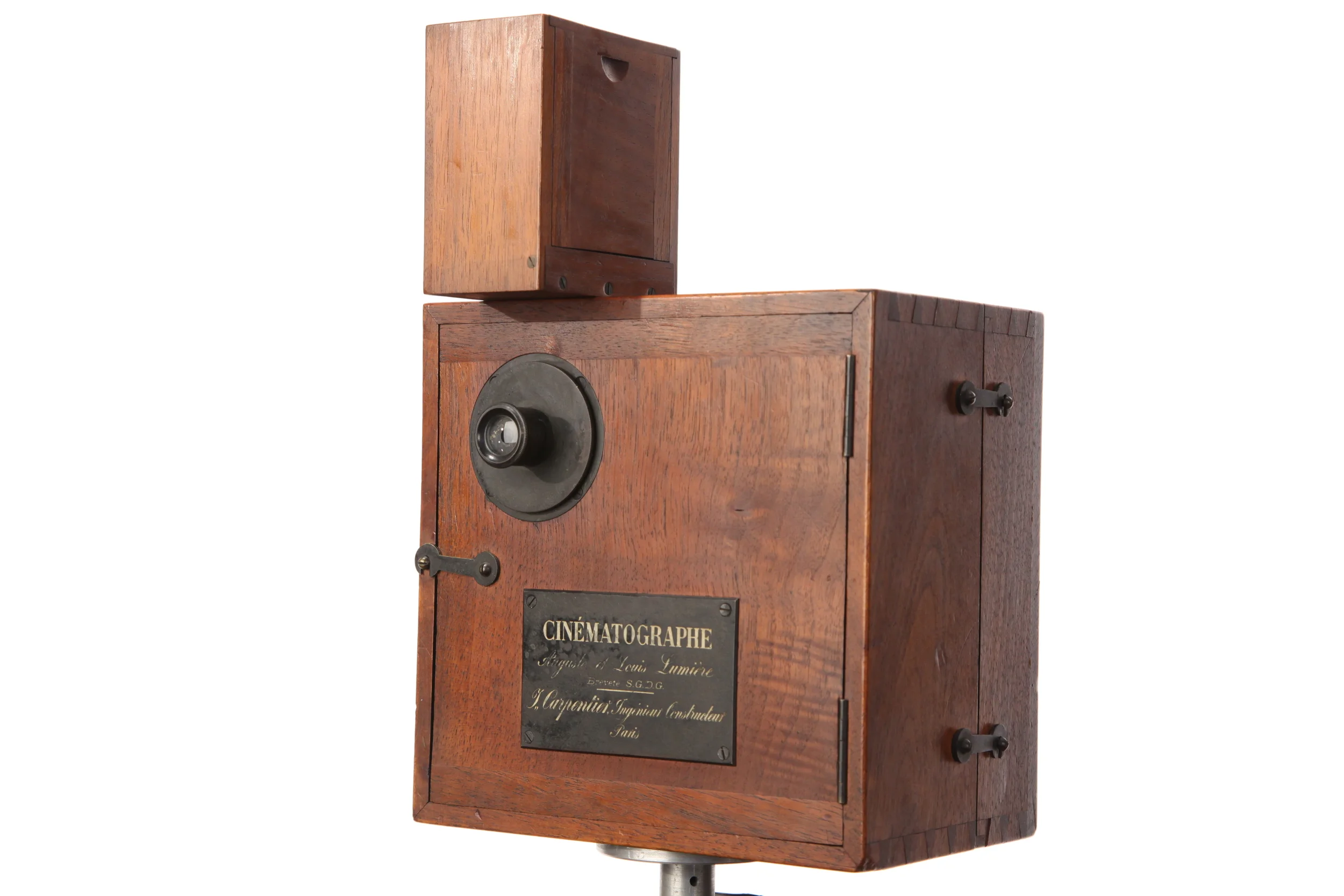1895 Lumiére Cinématographe


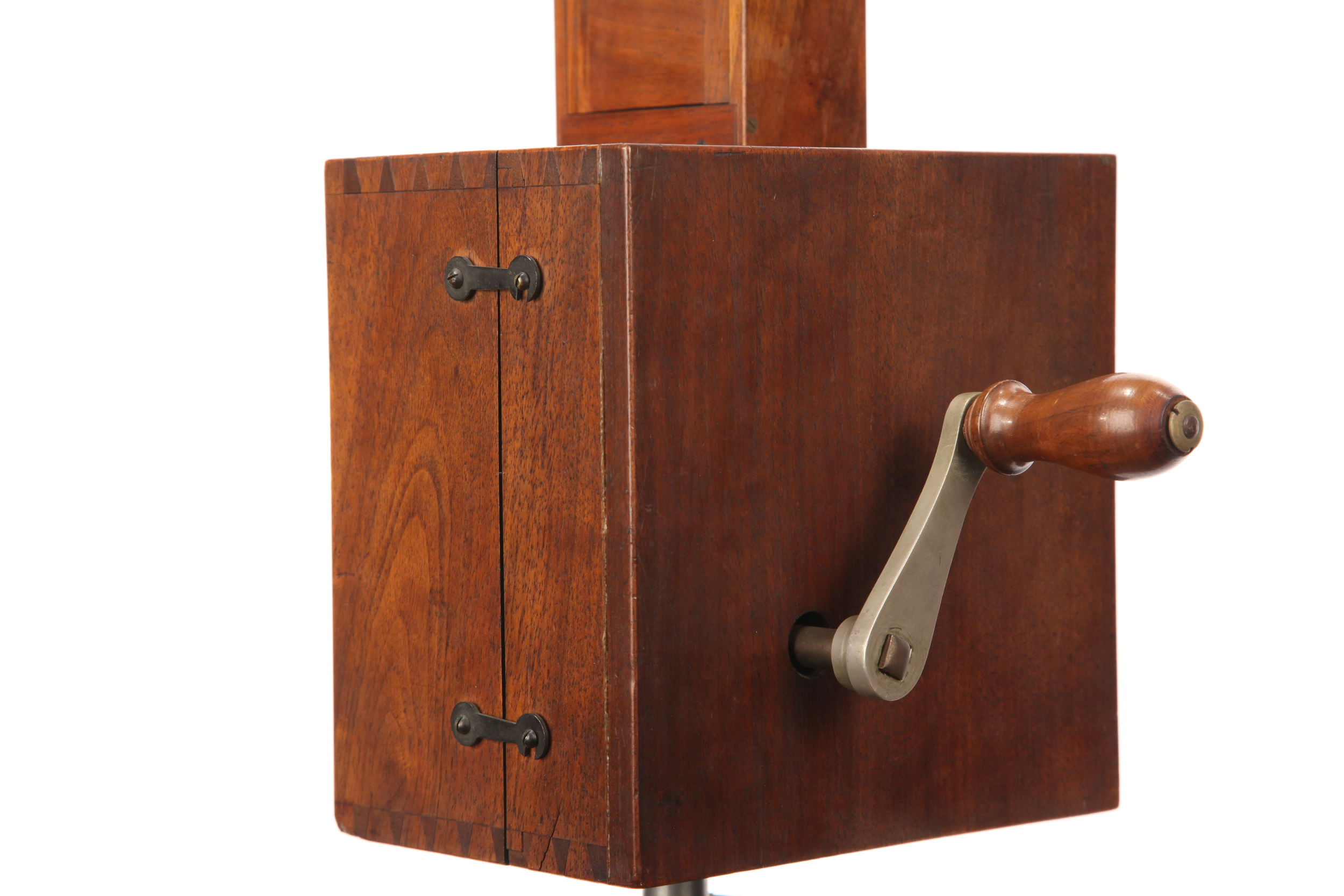
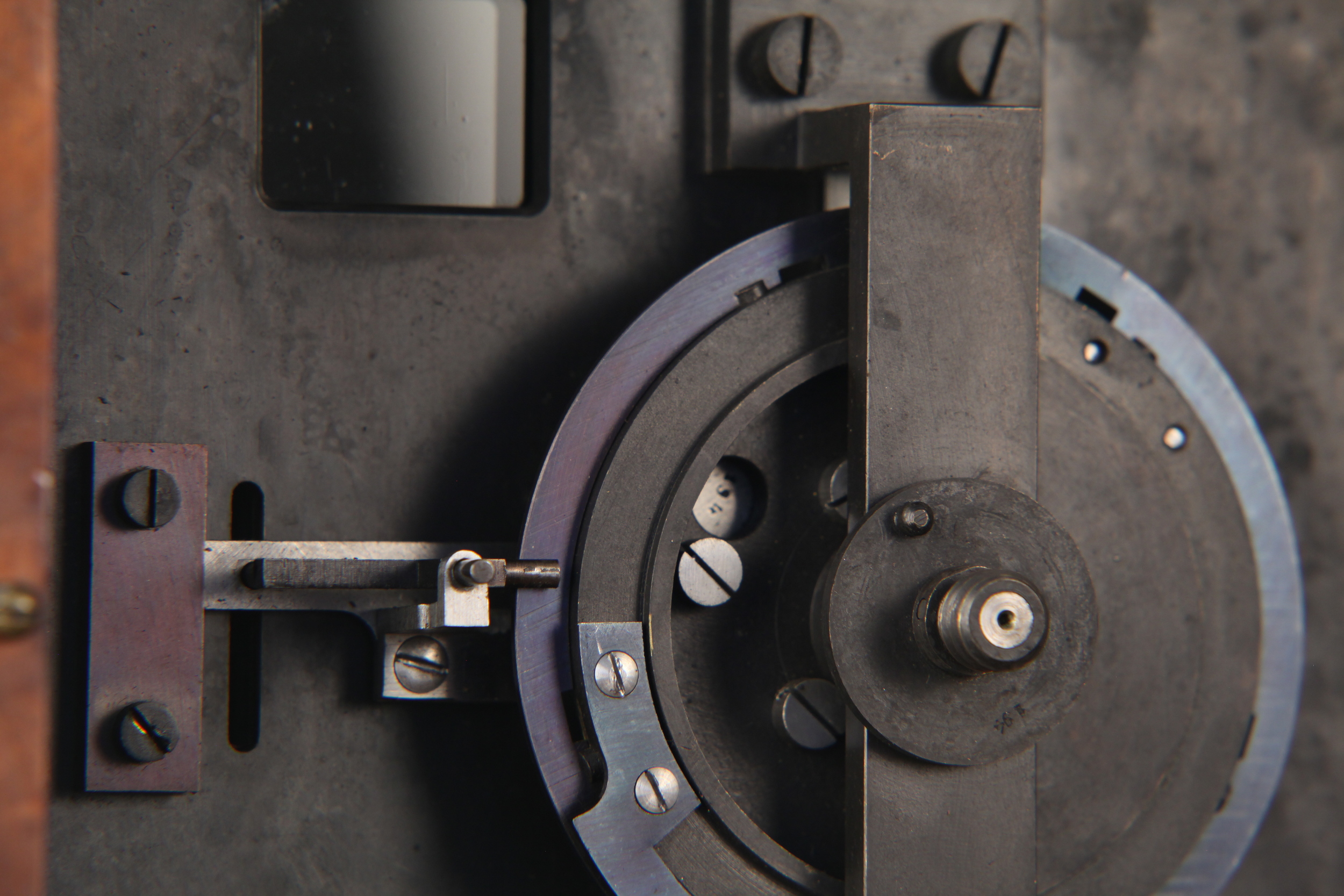
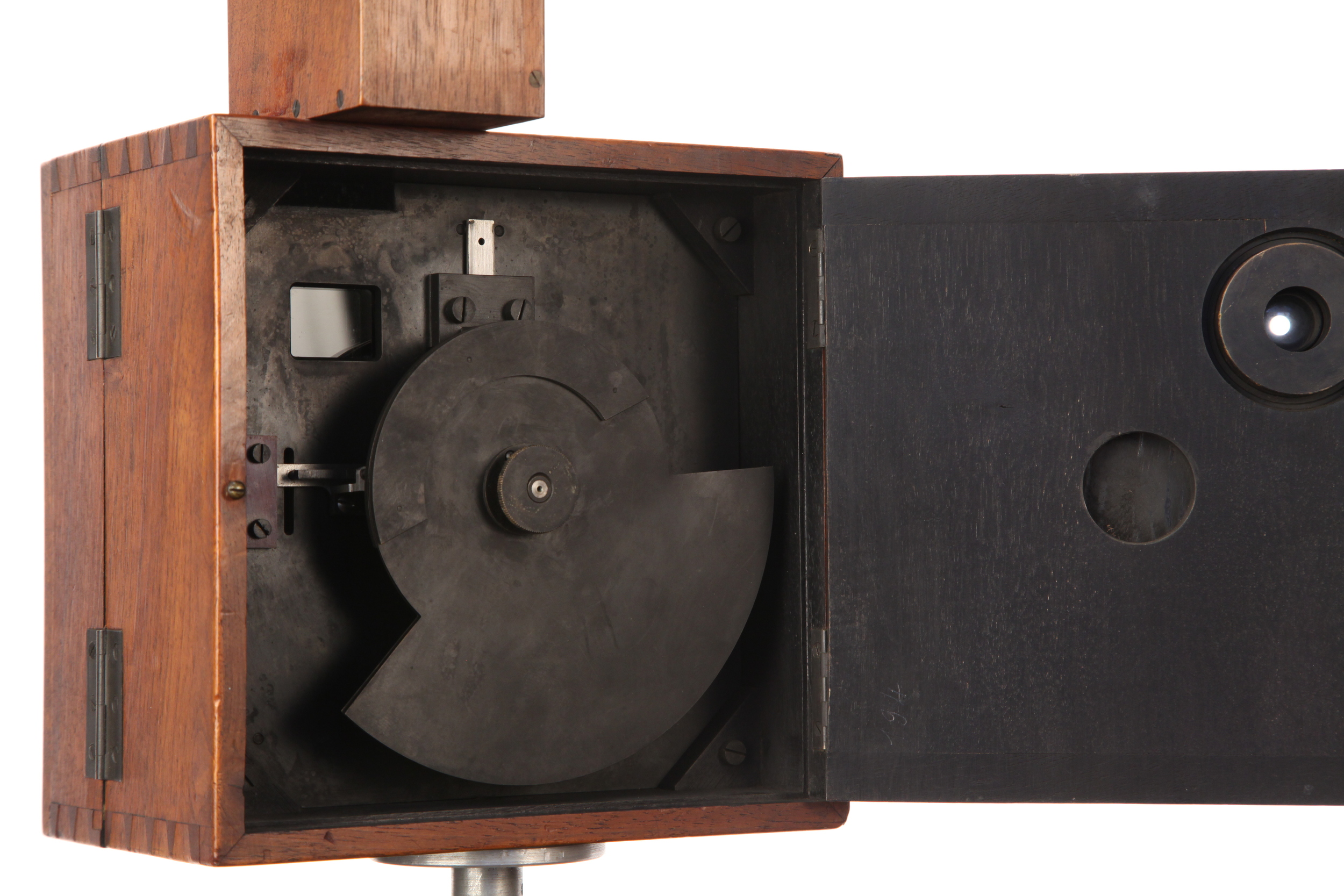
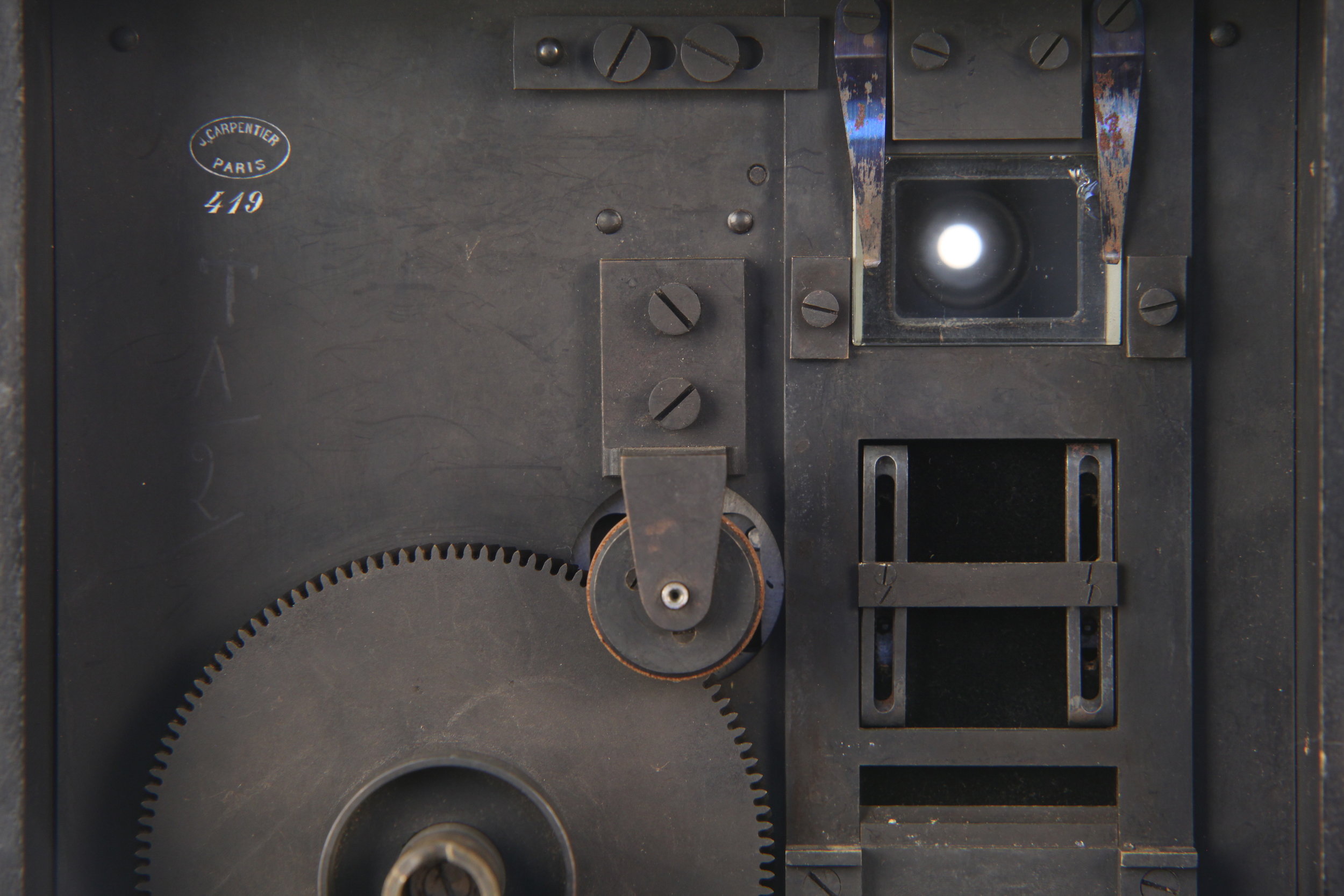
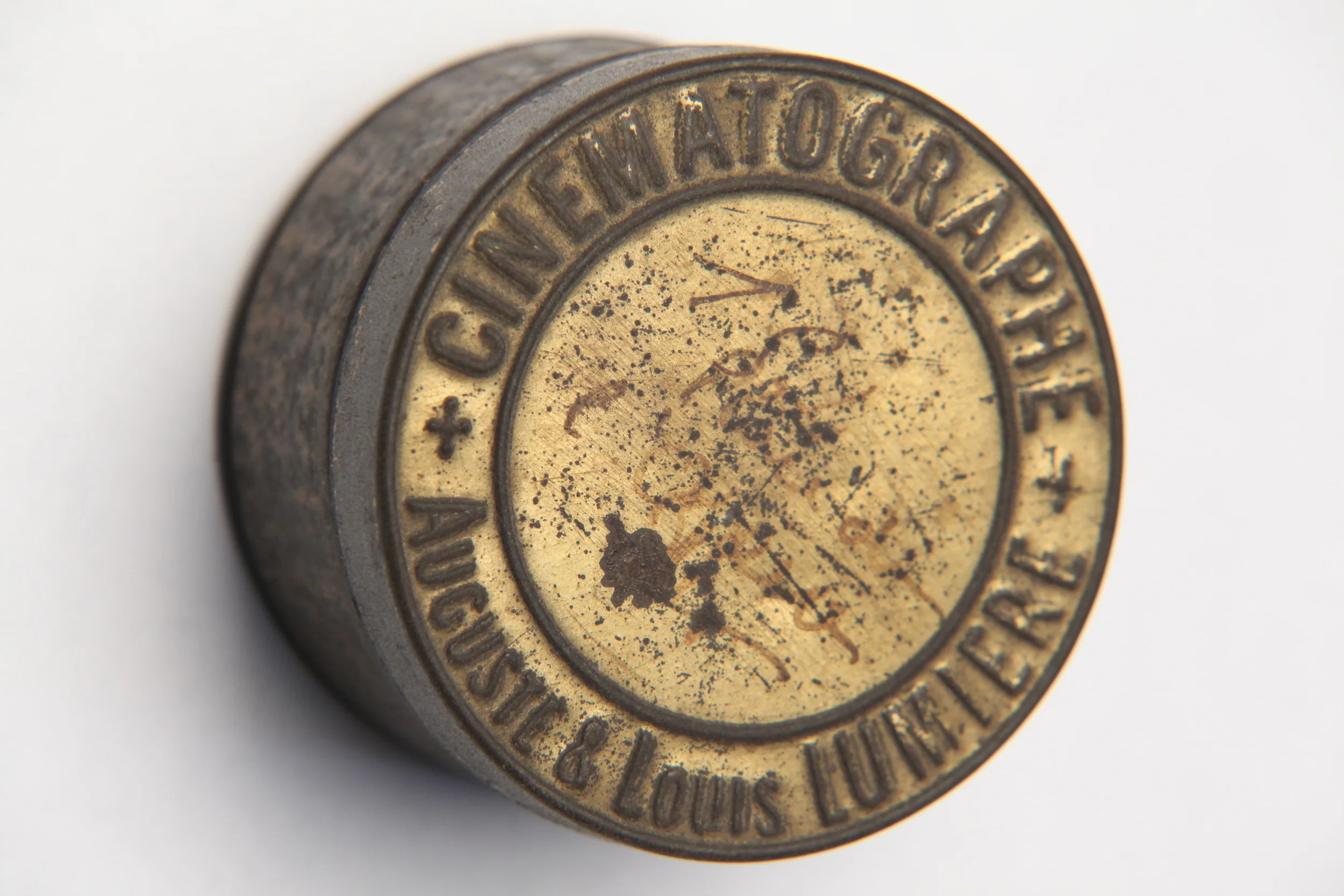

Louis Lumiére witnessed the Edison’s Kinetoscope when it was exhibited in Paris in 1894. The Kinetoscope allowed a single viewer to see films through a peep hole. Louis and brother Auguste Lumiére were successful manufactures of photographic materials in Lyon France. They were impressed with the Kintoscope but wanted to find a way to project the photographic images on a screen as opposed to the limitations of a single viewer device. They set upon developing their own equipment.
The Lumiéres Cinématographe was issued a French patent in 1895. It functioned as a camera, printer and projector. The 40’ film magazine on top and the internal take up magazine were removed for use as printer or projector. The Lumiére film stock adhered to the Edison 35mm width but used a single round perforation on both sides per frame verses the four rectangular perforations on both sides per frame on the Edison stock. The intermittent film movement they designed was a reciprocal claw movement actuated by a harmonic cam.
The Lumiéres determined after experimentation with Edison’s standard of 48 frames per second rate of the Kinetoscope and with slower frame rates that a 16 frame per second rate was their ideal. The Cinématographe exposed eight frames per turn of the crank providing for 16 frames per second for two revolutions of the crank. This frame exposure rate was to become the standard for many years to come.
Cinématographe cameras filmed all over the world thanks in part to their light weight and small profile. The term “ cinema “ as an international equivalent to film can be attributed to this early but beautifully designed machine.
1895 Lumiére Cinématograph Serial No. 419
Camera is complete and operative with printer magazine attachment.
